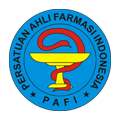Hubungan Asupan Gizi, Pemberian Asi Eksklusif, dan Pengetahuan Ibu dengan Status Gizi (Tb/U) Balita 6-59 Bulan
DOI:
https://doi.org/10.26630/jk.v9i1.800Keywords:
Food Intake, Exlusive Breastfeeding, Mother’s Knowledge, Nutritional Status.Abstract
Stunting prevalence in Indonesia is 37,2%, whereas in Bandar Lampung City is 44,6% and in Kemiling District is 39,6%. This study was to determine the risk factors associated with children nutritional status (TB/U) in Beringin Jaya, Kemiling. This analytical survey research was using cross-sectional design. Population in this study were 1141 toddlers, and 88 as respondents. Cluster Sampling was used to determine the respondents. Data was analyzed Univariate and Bivariate. This research was conducted in Beringin Jaya, Kemiling. The result showed that 19 toddlers (21.6%) were identified stunting and 69 (78.4%) toddlers were normal. There was no correlation between energy intake with nutritional status (TB/U) with p-value=0,175. There was a correlation between protein intake with nutritional status (TB/U) with p-value=0,022. There was no correlation between exclusive breastfeeding and nutritional status (TB/U) with p-value=0.758. There was no correlation between mother’s knowledge of nutritional status (TB/U) with value p-value=1,000. It was suggested that Public Health Centers and Integrated Service Center should improve its activities that related with Exclusive Breastfeeding through counseling and Breastfeeding food demonstration to society, especially mothers, the knowledge of healthy and nutritious breastfeeding food for children. It was also suggested that Public Health Centers and Integrated Service Center should improve its activities on the importance of the golden period of 1000 days, especially for childbearing age women and pregnant women in order to reduce the risk of stunting.
References
Andajani, Susilowati, 2010, Hubungan Antara Pngetahuan Ibu Tentang Gizi dan Pemberian ASI Eksklusif dengan Status Gizi Anak 7-36 Bulan di POSYANDU Delima 2 Dusun Sanan Desa Watugede Kecamatan Singosari Kabupaten Malang, Naskah Publikasi, Sekolah Tinggi Ilmu Kesehatan Aisyah Yogyakarta.
Anisa, 2012, Faktor-faktor yang berhubungan dengan kejadian Stunting pada balita usia 25-60 bulan di Kelurahan Kalibaru Depok, Skripsi Sarjana, Fakultas Kesehatan Masyarakat Universitas Indonesia, Depok.
Branca, F. dan Ferrari, M, 2002, Impact of Micronutrient Defeciencies on Growth: The Stunting Syndrome.
Dinkes Lampung 2014. Profil Kesehatan Provinsi Lampung Tahun 2014. Lampung.
Ekawaty, dkk, 2015, Hubungan antara Pengetahuan Ibu tentang Gizi dengan Status Gizi anak umur 1-3 tahun di Desa Mopusi Kecamatan Lolayan Kabupaten Bolaang Mongondow Induk Sulawesi Utara. Jurnal, Fakultas Kedokteran Universitas Sam Ratulangi Manado.
Jeanette, 2014, Hubungan Asupan Energi dengan Kejadian Stunting pada anak usia 13-36 Bulan di Wilayah Kerja Puskesmas Tuminting Kota Manado. Skripsi, Fakultas Kesehatan Masyarakat Universitas Sam Ratulangi.
Kartasapoetra, Marsetyo. 2010. Ilmu Gizi. Jakarta: Rineka Cipta
Khamzah, Nur, 2012. Segudang Keajaiban ASI yang Harus Anda Ketahui: PT Flash Book.
Lamid, Astuti. 2015. Masalah Stunting pada Anak Balita. Bogor. Penerbit IPB Press.
Lemeshow, dkk.1997. Besar Sampel dalam Penelitian Kesehatan. Yogyakarta: Gajah Mada University Press.
Marniasih, 2015, Fakto-faktor yang berhubungan dengan kejadian Stunting pada Batita usia 12-35 Bulan di desa Pandan Indah Kecamatan Praya Barat Daya Kabupaten Lombok Tengah Nusa Tenggara Barat, Artikel Penelitian, Sekolah Tinggi Ilmu Kesehatan Ngudi Waluyo Ungaran, NTT.
Muchlis, dkk, 2011, Hubungan Asupan Energy dan Protein dengan Status Gizi Balita di Kelurahan Tamamaung, Artikel, Program Studi Ilmu Gizi Universitas Hasanudin Makassar.
Nazarena, Sartono, Teati, 2013, Studi Determinan Stunted pada anak balita pengunjung posyandu wilayah kerja Dinkes Kota Palembang, Artikel, Jurusan Gizi Poltekkes Palembang.
Notoatmodjo, Soekidjo. 2013. Promosi Kesehatan dan Perilaku Kesehatan.Jakarta: Rineka Cipta.
Riskesdas, 2013.Laporan Nasional Riset Kesehatan Dasar (Riskesdas) Tahun 2013. Badan penelitian dan Pengembangan Kesehatan Departemen Kesehatan RI. Jakarta.
Rohmatun, 2014, Hubungan Tingkat Pendidikan Ibu dan Pemberian ASI Eksklusif dengan kejadian Stunting pada Balita di Desa Sidowarno Kecamatan Wonosari Kabupaten Klaten, Naskah Publikasi, Fakultas Ilmu Kesehatan Masyarakat Uiversitas Muhammadiyah Surakarta.
Sulistyoningsih.Hariyani. 2011. Gizi untuk Kesehatan Ibu dan Anak.Yogyakarta: Graha Ilmu.
Supariasa, et al. 2012. Penilaian Status Gizi. Jakarta: Penerbit Buku Kedokteran EGC.
Theron, M, et al.2004. Inadequate Dietary Intake is Not The Cause of Stunting Amongst Young Children Living in an Informal Settlemen in Gauteng and Rulal Limpopo Province in South Africs: The Nutrigro Study. Public Health Nutritionist. Diakses pada 11 Maret 2012 dari www.ncbi.nlm.nih.gov
Unicef Indonesia. 2012. Ringkasan Kajian Gizi Ibu dan Anak. Jakarta. Diunduh dari https://www.unicef.org/indonesia/id/A6 B_Ringkasan_Kajian_Gizi.f
Waryana. 2010. Gizi Reproduksi. Yogyakarta: Pustak Rihana
World Health Organization (WHO). 2016. Child Stunting. http://who.int/gho/publications/world_health_statistics/en/
Downloads
Published
Issue
Section
License
Authors who publish in this journal agree to the following terms:
- Authors retain copyright and grant the journal right of first publication with the work simultaneously licensed under a Creative Commons Attribution License (CC BY-SA 4.0) that allows others to share the work with an acknowledgment of the work's authorship and initial publication in this journal.
- Authors can enter into separate, additional contractual arrangements for the non-exclusive distribution of the journal's published version of the work (e.g., post it to an institutional repository or publish it in a book), with an acknowledgment of its initial publication in this journal.
- Authors are permitted and encouraged to post their work online (e.g., in institutional repositories or on their website) prior to and during the submission process, as it can lead to productive exchanges, as well as earlier and greater citation of published work.















